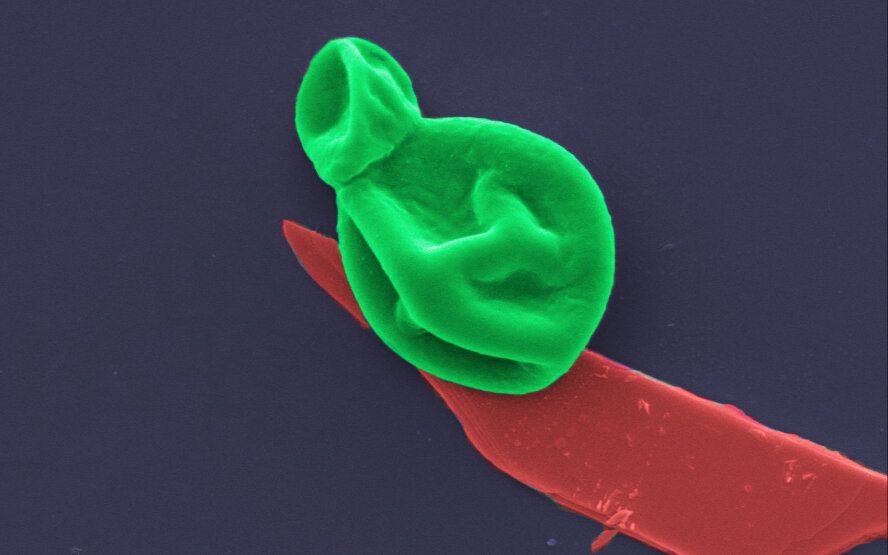Scientists are using natural-language algorithms to try understand which coronavirus mutations will be most infectious.



Covid variants will be the next big challenge. Can vaccines protect us?
All viruses mutate. They do this to adapt and survive better in their specific host. The virus that causes Covid-19 is no different: it has moved from the animal realm, where it most likely originated in bats, to the human world. Since then, scientists have been locked in a battle between the spread of the virus and the ability to immunise against it. We now have the vaccines to protect us against Covid-19 – but what happens when this virus mutates further, as it likely will? {“uid”:0.9208093413637026,” hostPeerName”:” https://amp-theguardian-com.cdn.ampproject.

The reality is Benny and Josh both have Canavan disease, a fatal inherited brain disorder. They are buckled into wheelchairs, don’t speak, and can’t control their limbs.
On Thursday, April 8, in Dayton, Ohio, Landsman and his family rolled the older boy, Benny, into a hospital where over several hours, neurosurgeons drilled bore holes into his skull and injected trillions of viral particles carrying the correct version of a gene his body is missing.

The material is one of the thinnest antimicrobial coatings developed to date and is effective against a broad range of drug-resistant bacteria and fungal cells, while leaving human cells unharmed.
Importantly, the BP also began to self-degrade in that time and was entirely disintegrated within 24 hours—an important feature that shows the material would not accumulate in the body.
The laboratory study identified the optimum levels of BP that have a deadly antimicrobial effect while leaving human cells healthy and whole.
The researchers have now begun experimenting with different formulations to test the efficacy on a range of medically-relevant surfaces.
How seriously do you take your diet?
It is one of the foundations upon which everything else stands.
We have gone from abundant quality in a limited supply in our evolutionary past, to an abundance of quantity but with the quality now lacking (for many), and yet, as I show here, your health, future prospects for disease and illness, and ultimately, your longevity, are intrinsically linked.
In this video I take it right back to ground zero, and then bring the latest studies to bear, so we can see how it influences it all, so you can make the right decisions about what you should, and maybe should not, be eating.
Hope you find it of interest.
Have an amazing day!!

Controversy has shrouded the once-common plasticizer BPA since studies started to highlight its links to a whole range of adverse health effects in humans, but recent research has also shown that its substitutes mightn’t be all that safe either. A new study has investigated how these compounds impact nerve cells in the adult brain, with the authors finding that they likely permanently disrupt signal transmission, and also interfere with neural circuits involved in perception.
BPA, or bisphenol A, is a chemical that has been commonly used in food, beverage and other types of packaging for decades, but experts have grown increasingly concerned that it can leech into these consumables and impact human health in ways ranging from endocrine dysfunction to cancer. This came on the back of scientific studies revealing such links dating back to the 1990s, which in turn saw the rise of “BPA-free” plastics as a safer alternative.
One of those alternatives is bisphenol S (BPS), and while it allows plastic manufacturers to slap a BPA-free label on their packaging, more and more research is demonstrating that it mightn’t be much better for us. As just one example, a study last year showed through experiments on mice that just like BPA, BPS can alter the expression of genes in the placenta and likely fundamentally disrupt fetal brain development.


Michael D. West talking about regeneration.
[Reuploaded from Vimeo: https://vimeo.com/522148118]
In this video, Dr. Michael West, CEO of AgeX Therapeutics, discusses the non-peer reviewed preprint article in bioRxiv on the potential role of the clustered protocadherin genes in regeneration, aging, and cancer, and the relevance of the discovery for iTR product development.
Full paper: https://www.biorxiv.org/content/10.1101/2021.03.07.434314v1.full.


Circa 2016 o,.o.
Titanium is the leading material for artificial knee and hip joints because it’s strong, wear-resistant and nontoxic, but an unexpected discovery by Rice University physicists shows that the gold standard for artificial joints can be improved with the addition of some actual gold.
“It is about 3–4 times harder than most steels,” said Emilia Morosan, the lead scientist on a new study in Science Advances that describes the properties of a 3-to-1 mixture of titanium and gold with a specific atomic structure that imparts hardness. “It’s four times harder than pure titanium, which is what’s currently being used in most dental implants and replacement joints.”
Morosan, a physicist who specializes in the design and synthesis of compounds with exotic electronic and magnetic properties, said the new study is “a first for me in a number of ways. This compound is not difficult to make, and it’s not a new material.”